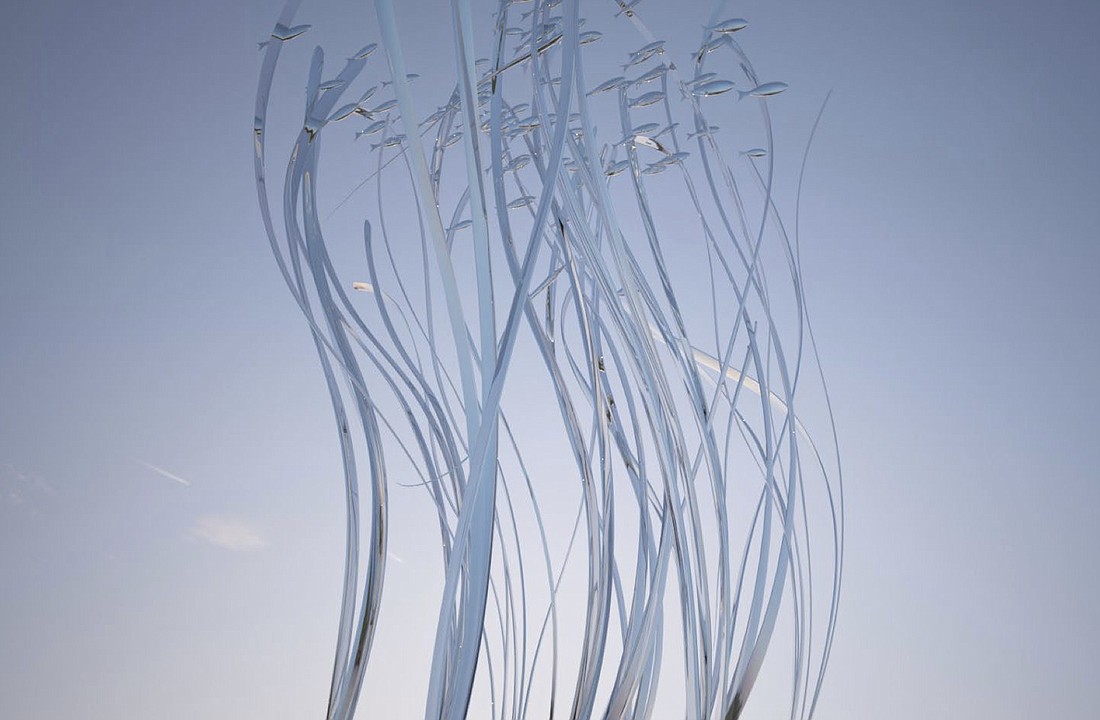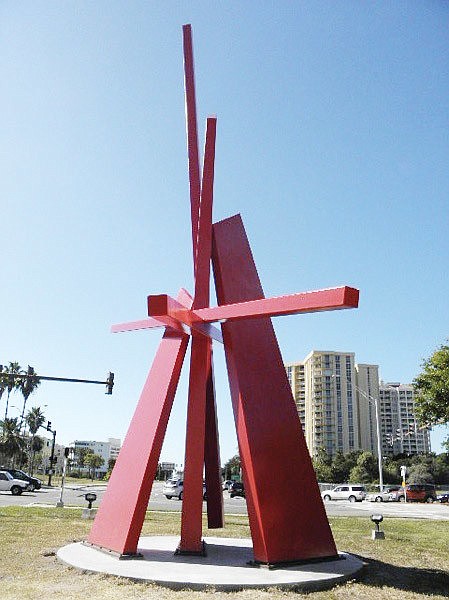- May 10, 2025
-
-
Loading

Loading

Nearly $300,000 worth of roundabout sculptures are under fabrication, but for now at least there's nowhere to place them.
During the City Commission’s July 24 budget workshop, Mary Davis Wallace, the city’s public art coordinator, reported that a single bid for concrete pads on which to mount the sculptures in the roundabouts on U.S. 41 at 10th and 14th streets came in at more than double the $514,000 budgeted.
Wallace told members of the Public Art Committee during their Aug. 2 meeting that she is exploring alternative locations for the sculptures — Seagrass and Poly — because, as it turns out, it costs a lot more for construction within the Florida Department of Transportation right of way than on city property.
“The cost of working in the FDOT space is criminal,” said PAC Chairman Jeff Jamison.
The bid received by the city was from Jon F. Swift Construction, a contractor that partners on many projects with the city, a $1.13 million bid that was rejected. One reason for the high cost, Wallace said, is that the foundation and mounts must withstand winds of 155 mph.
“The clarification that needs to be made is that FDOT is a much smaller pool of vendors,” Jamison said. “You’re talking about people who build bridges and roads, and if you're not in FDOT space, there are many other people who don't have the costs associated with traffic control in Florida Department of Transportation highways, right?”
“Yes, that’s correct,” confirmed Wallace.
Such contractors must be certified by FDOT to perform construction in its right of way, which constrains the competitive bid field. Wallace told the PAC the city asked for a more favorable bid, which came back only marginally lower.
“In everyone's defense, the cost of construction has tripled, if not more,” Wallace said. “They have to be FDOT certified. There's a MOT (management of traffic) requirement. So there are a lot of things that are going into this that would not normally be factored into a city-owned roundabout.”
Wallace recommended the PAC hold a special meeting before its next regular meeting in November so she can present a relocation plan for the roundabout sculptures.

“I would like for the Public Art Committee to make a recommendation on some of these locations, and then we will be taking this to City Commission to determine what those expenditures are going to look like,” Wallace said.
She added that she has placed one of the city’s signature sculptures, Complexus, on the relocation plan. The 70-foot sculpture by John Henry was a featured attraction in Sarasota’s 2011-2012 Season of Sculpture. Afterward, it was purchased by a group of residents who raised $550,000 to donate the piece to the city in 2013.
It stood at the corner of U.S. 41 and Gulfstream Avenue until it was temporarily relocated to the Sarasota Museum of Art when the roundabout construction began.
“I think we should just capture everything in the net right now,” Wallace said. “Considering how much it costs to pour pads, we want to make sure that we get some cost estimates before we have it on a crane and we can't pay to pour the concrete slab that it goes on.”
Those three sculpture pads aren’t the only considerations the PAC and the city will face. After two years of work, the committee has already selected a sculpture for the Fruitville Road roundabout to recommend to the City Commission, which, if it chooses to go forward with that $150,000 acquisition, will face the same platform cost dilemma.

“We should talk about Fruitville Road and whether or not this changes the recommendation of the Public Art Committee,” Wallace said. “I do think we need to solve these issues first and determine whether or not any of these roundabout projects are going to be feasible. I feel like we're going to keep running into the same issue.”
The pads for the 10th and 14th street roundabouts were specified at 15 feet in diameter, and the sculptures were designed to be mounted within that space. Wallace said staff was confident with its $500,000 budget for the roundabout pads, but added that estimate was made two years ago.
“Things have changed quite a bit since then,” she said.
Because the city now owns Seagrass and Poly, and plans to find a permanent home for Complexus, their potential locations will be outside of FDOT purview, which opens the field to more contractors and a lower cost.
Whether they land in smaller city street roundabouts or other locations remains to be determined. City Manager Marlon Brown suggested to commissioners previously they may be located in close proximity to their intended roundabouts.
“FDOT-owned and maintained space is going to cost more to operate within,” Wallace said. “Space in roundabouts within the city that are owned and operated and maintained by the city should be less impactful financially, but the concepts for those (sculptures) responded to the size of the roundabouts.
"It really wasn't that we or any of the parties involved understood that we were going to be pricing ourselves out of the market when these were being designed.”